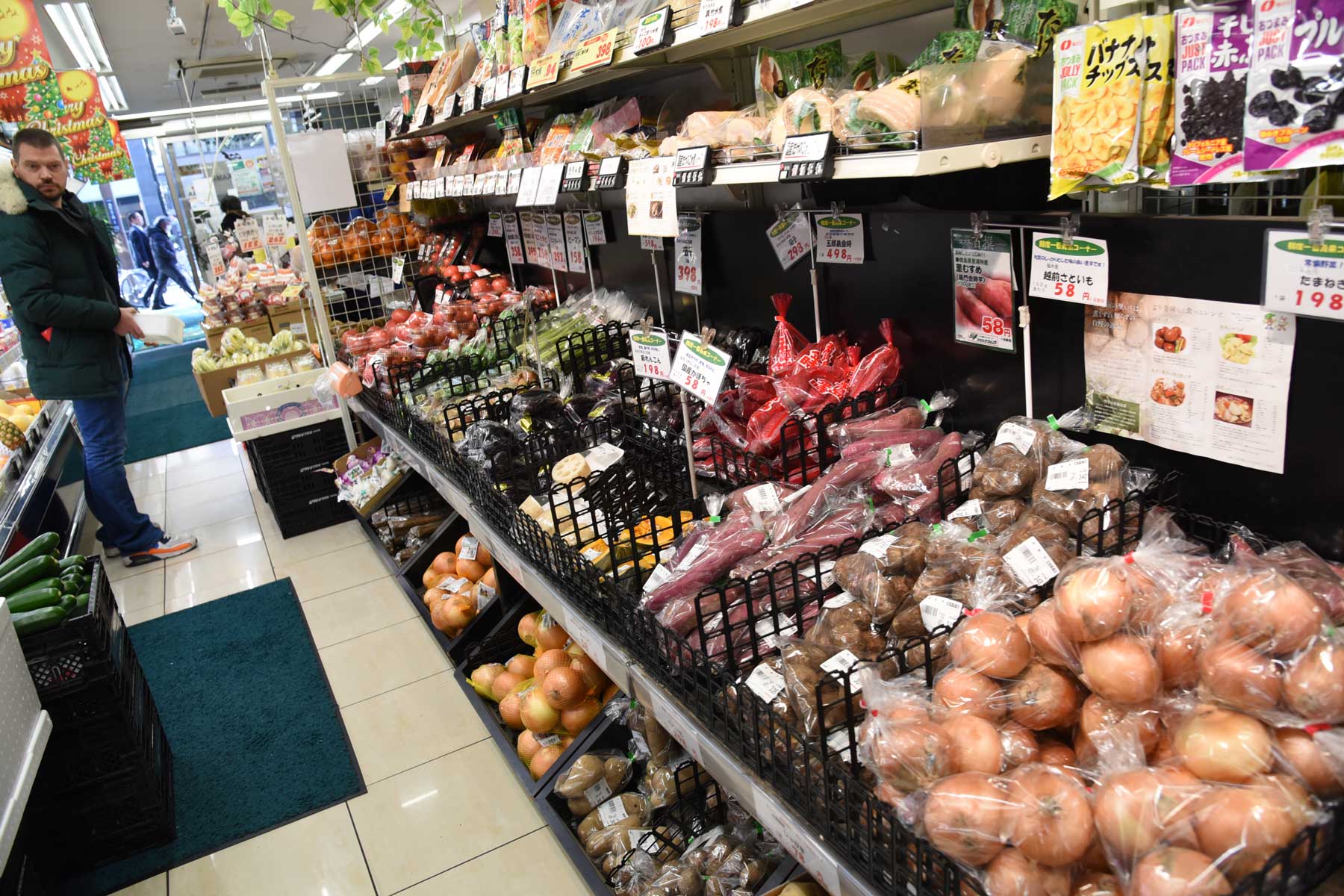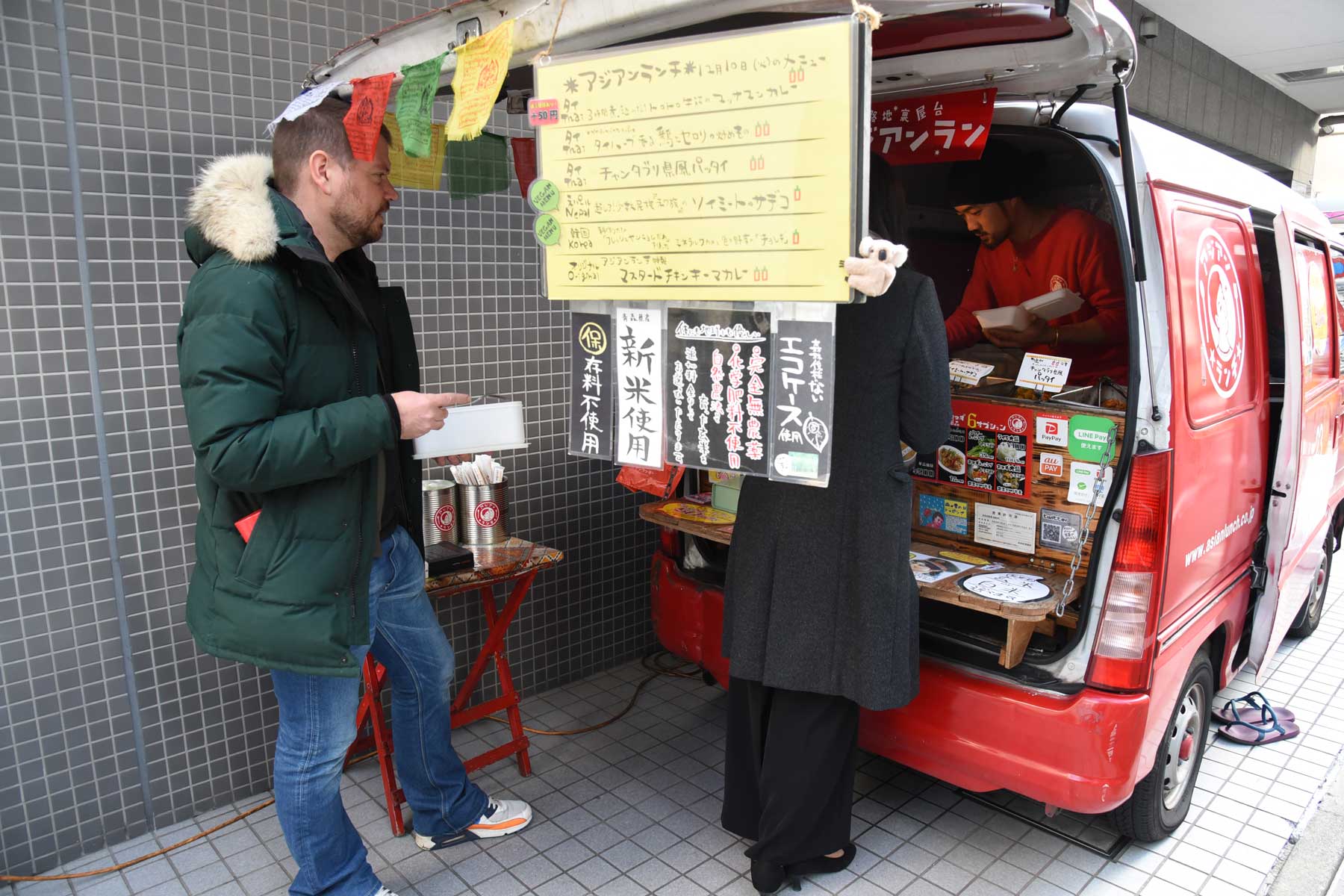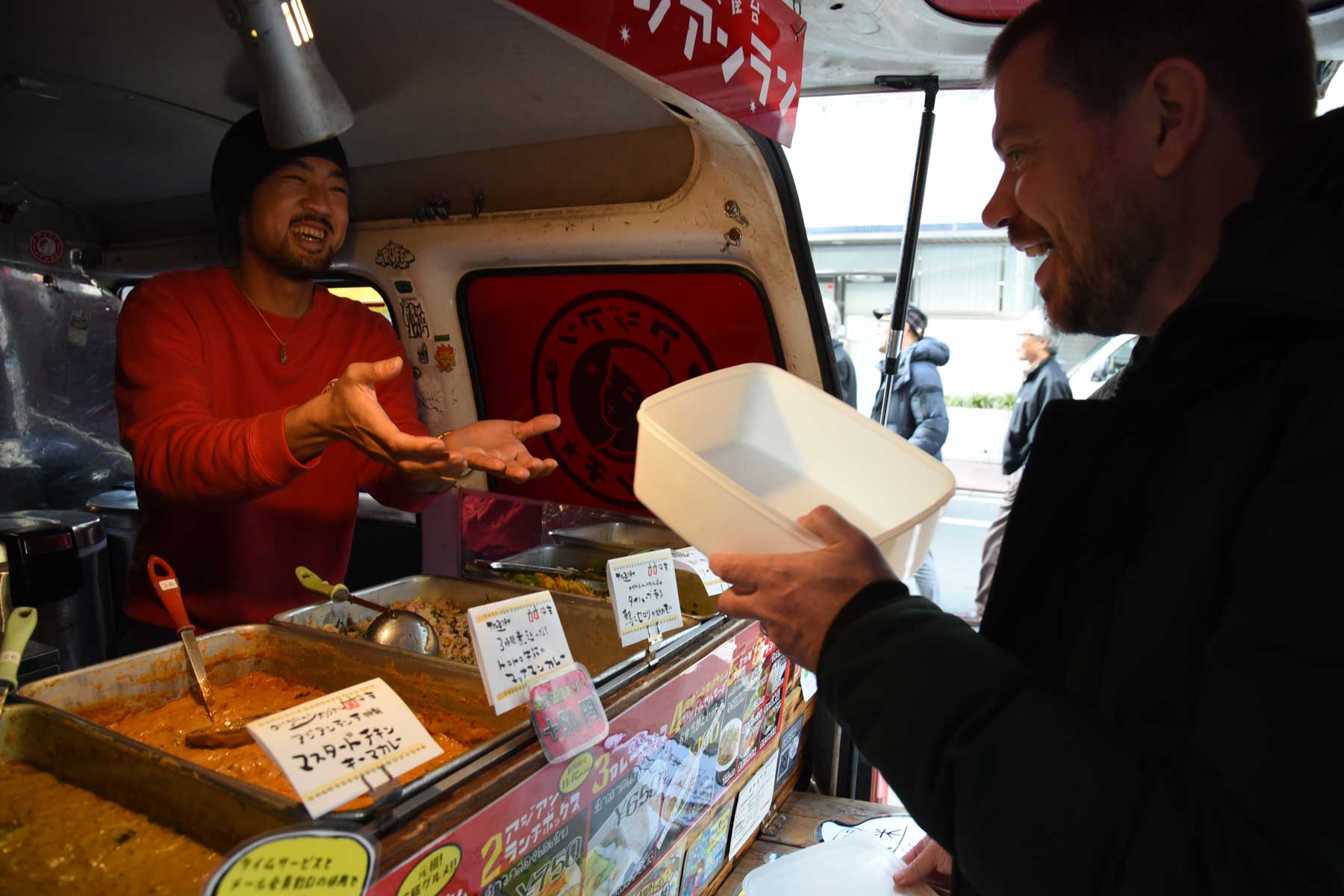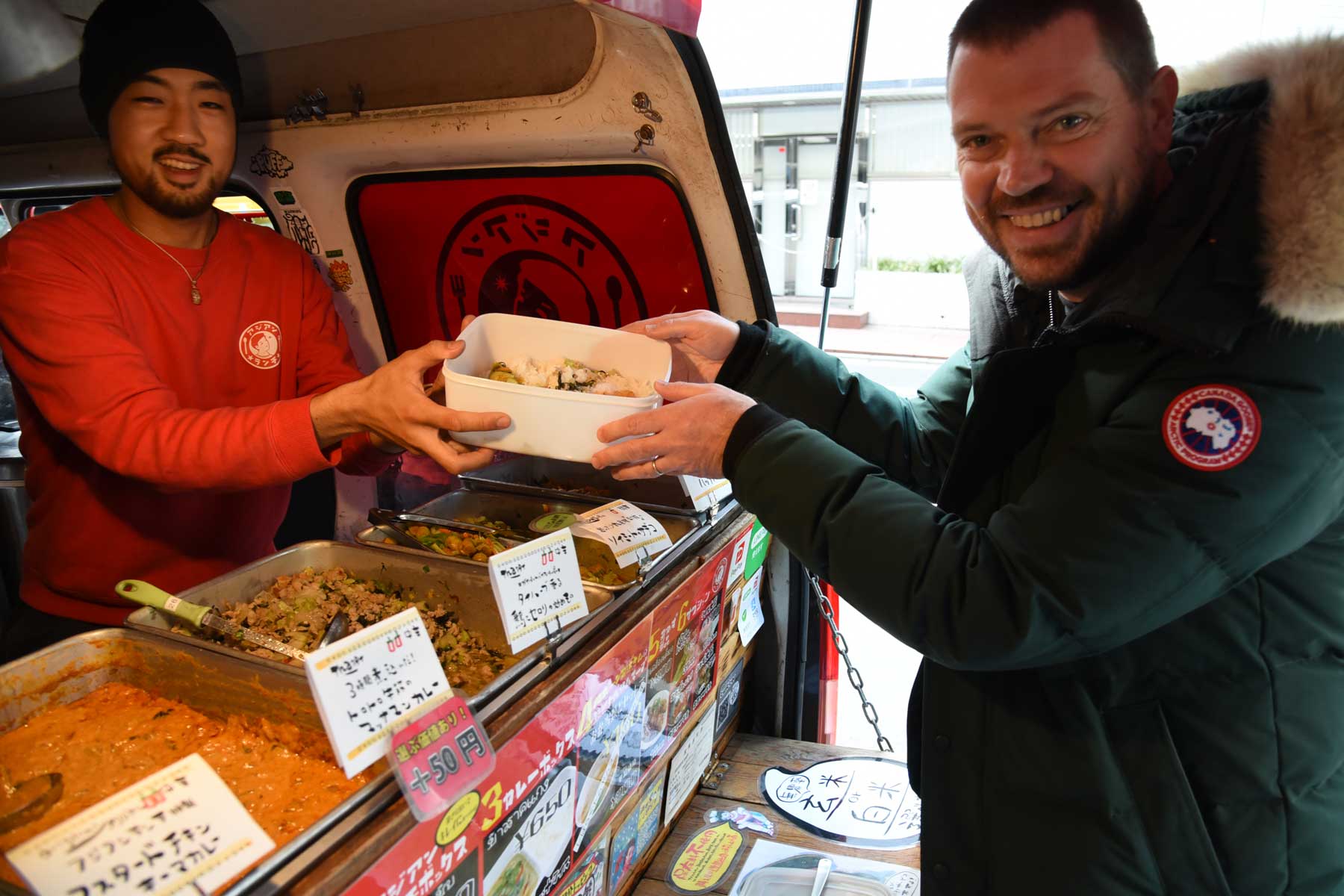THE CLIMATE CRISIS
Throwaway society:
Rejecting a life consumed by plastic
A worker sorts recyclable material, including plastic bags and bottles made of polyethylene terephthalate, at the Tsurumi Recycling Center in Yokohama, Kanagawa Prefecture, in 2015. BLOOMBERG
Japan produces an estimated 9 million tons of plastic waste each year, with disposable packaging and food containers accounting for more than 40 percent. But how exactly does plastic consumption impact us on a personal level?
ANDREW McKIRDY
Staff writer
How much single-use plastic do you think you consume in an average week living in Japan?
What if you were to collect all the plastic bottles, shopping bags, food cartons, hand wipe wrappers, straws, cutlery, packaging, packaging-within-packaging and packaging-within-packaging-within-packaging that you accumulate in a week, and lay it all out on a large table?
I tried it, and it was not a pretty sight. It filled the entire surface of a 1.5-meter-by-5.2-meter table, and included 17 plastic bottles, 27 carrier bags, a kaleidoscope of food wrappers, and numerous other pieces of flotsam and jetsam that I had managed to accrue over seven days in early December.
Japan is infamous for its use of disposable plastic. Elaborate but often unnecessary food packaging is ubiquitous in supermarkets and convenience stores all over the country, and Japanese shoppers use an estimated 30 billion plastic shopping bags a year.
Japan is the world’s second-biggest producer of plastic waste per capita behind the United States, and goes through around 9 million tons of plastic waste each year. Of that, more than 40 percent is disposable plastic such as packaging and food containers.
“Whether you go to a convenience store or a supermarket, you basically have no option but to use disposable plastic,” says Hiroaki Odachi, project leader of Greenpeace Japan’s plastic campaign. “Whatever you buy, it comes wrapped in packaging.”
You don’t need to spend long in Japan to notice how much single-use plastic there is, but is it really impossible to avoid it? I decide to find out, and set myself a goal of not using any plastic that is designed to be thrown away after a single use for a whole week.
First, I visit Greenpeace Japan to find out more about plastic waste. Odachi tells me that around 8 million tons of plastic rubbish — or one truckload every minute — is dumped into oceans around the world each year. He says microplastics have polluted the seas, food chain and air to such an extent that the average person ingests 5 grams of plastic — the equivalent of a credit card — every week.
He also tells me that more than 90 percent of all the plastic in the world has never been recycled. Given Japan’s high rate of recycling, this surprises me. The government says 86 percent of Japan’s plastic waste is recycled, with 8 percent incinerated and the rest sent to landfills.
The reality, however, is not so clear cut. Around 58 percent of Japan’s plastic waste undergoes “thermal recycling,” where it is burned to produce heat and electricity, and another 14 percent is exported to other countries. A mere 13 percent is actually recycled in Japan.
The government pledged to tackle the problem ahead of last year’s Group of 20 Summit in Osaka, and will introduce a mandatory charge for plastic shopping bags, with some exceptions, starting from July.
Odachi, however, believes a fundamental shift in mindset is needed among politicians and business leaders.
“Big businesses who rely on using disposable plastics think about collecting the waste from what they sell so it can be recycled,” he says. “Or they think about reducing the amount of plastic by using 50 percent biodegradable materials, or by making the packaging thinner. They only look for the answer from within their existing business model. But the most important thing is not to produce so much disposable plastic in the first place. Reduce the amount of rubbish, and create an environment where businesses can reuse and refill.”

Next I meet Mona Neuhauss, a half-Japanese, half-German communications consultant who grew up in the United Kingdom and moved to Japan 3½ years ago. Neuhauss runs a business called No Plastic Japan that sells reusable stainless steel straws to individuals and establishments such as cafes and restaurants in a bid to wean them off single-use plastic straws.
Neuhauss’ business sells only a handful of products, but she says it doesn’t take much to make a difference.
“I think we underestimate it,” Neuhauss says. “If one person doesn’t use a plastic bag for a whole year, that’s a huge amount — especially for people who buy something from the convenience store every day, and you get a bag every time.
“It’s not only the impact that you make yourself. People seeing whatever you do can have the effect of spreading. I remember my colleague came over and said she had bought a cup that she was going to use for her coffee. You don’t even realize that you have that effect on them.”
I tell Neuhauss about my plan to stop using single-use plastic for a week, and she warns me it will be tough. “It’s going to be the regular things like shopping for food,” she says. “It’s going to be things like when you need a snack. Anything that comes unplanned is going to be difficult.”
I start preparing by researching how to make my own toothpaste. Most toothpaste tubes are nonrecyclable, and as many as 20 billion are produced worldwide every year. I discover that toothpaste can be easily made at home from coconut oil, baking soda and peppermint oil, so I find some in a specialist baking shop, and buy a bamboo-based toothbrush with pig-hair bristles online. I also buy a shampoo bar that comes wrapped in paper, and get ready to start my challenge.
The toothpaste is very salty and initially unpleasant, but it leaves me with fresh breath and my teeth feel clean. The shampoo bar smells great and works perfectly — but so it should, given that it cost me more than ¥1,000.
Shopping for lunch looks like it could pose more of a problem. I am spending the first day of the week at home, so I take a fabric bag out to try to find some ingredients.
First, I visit a convenience store, and leave almost immediately when I discover that practically the only things I can buy are the fried chicken and steamed buns, which are served in paper or cardboard, on sale at the counter.
Next, I visit a greengrocer. I regularly visit this shop, but I had never really noticed before how many of the fruit and vegetables come pre-wrapped in plastic. Some things are obviously wrapped to group them for price or to protect them from damage, but I do wonder why individual onions or other solid vegetables with skin need to be kept under plastic.
I go to a supermarket and buy two apples and a packet of butter. The cashier doesn’t even raise an eyebrow when I say I have brought my own bag. I go to another greengrocer and buy lettuce. The person serving me thanks me for not taking a bag. So far, so good.
I then beat a hasty retreat from a bakery whose products are all pre-wrapped, then buy a tomato, five potatoes, a carrot, an onion, a jar of jam and a can of tomatoes at a supermarket. The cashier is unconcerned when I say I don’t want a bag, but she looks at me like I’m some kind of eccentric when I say I don’t want my potatoes placed in a smaller plastic bag either.
I am beginning to feel slightly embarrassed, and that only increases when I buy three slices of ham at a different supermarket’s delicatessen counter. The clerk agrees to wrap them in paper, but he tells me they might fall out if he doesn’t then put the package in a plastic bag. When I ask him not to, he looks at me like I’m a full-blown lunatic.
There is another awkward moment when I buy a baguette and a smaller piece of bread at a bakery. The clerk puts the baguette in a paper bag but puts the other piece of bread in a plastic bag. My request to put both in paper is met with confusion, and as I’ve had enough of making a fuss in shops that I often visit, I smile, accept defeat and take my plastic-wrapped bread back home.
My shopping trip has taken an hour, and has involved eight different shops over a fairly wide area. I eat a ham and salad sandwich for lunch, followed by an apple.
I have managed to find some of the ingredients to make a shepherd’s pie for dinner but I still need to buy some ground beef, so after lunch I take my Tupperware box to the butcher. He happily agrees to put the beef in it, but when he gives it back to me, I realize he has slipped a thin plastic sheet underneath the meat as well.
“The shop is not responsible for what happens to my bag later,” Neuhauss had told me when I met her. “Customers need to be aware that that’s OK. If something leaks in my bag, that’s my fault for not doing it properly, and shops should be OK with that. In the U.K., I couldn’t imagine someone complaining to a shop that a yogurt leaked in their bag. We need to shift what we see as good service.”

On the second day, I go to the office and take my lunchbox, a spoon and a flask of water. My plan is to go to one of the many food trucks serving lunch in the area, and ask if I can use my box rather than a disposable plastic container.
The owner of the truck I go to, Taku Kinugasa, of Asian Lunch in Tokyo’s Kioicho neighborhood, is more than happy to oblige. He uses paper containers anyway, and he recently switched from plastic spoons to wooden spoons, even though they cost a little more.
“In one day, maybe one or two customers will bring their own lunch boxes,” he says. “It’s still only a few. But if people do that, I give them some extra topping or a small discount. The other people who work here aren’t so aware of the problem and if they don’t become more conscious, nothing will change. But I tell them often that we need to do things differently, so maybe something might start to happen.”
The next day I go to meet Ryoko Seguchi, of the SuiDo! Network, an environmental nongovernmental organization that promotes the use of tap water and encourages people to buy less drinks in containers. The average person in Japan buys 183 plastic drink bottles a year, but Seguchi argues that the energy needed to transport and refrigerate drinks in cans and paper cartons makes them just as wasteful.
The SuiDo! Network is involved in a platform called Refill Japan, which maps places where people can drink water or fill up their water bottles for free, including cafes and restaurants. Refill Japan is also involved in improving existing water fountains and installing new ones around the country, but Seguchi admits that changing people’s habits can be hard.
“Drinks makers call their water ‘natural water’ and the packaging makes it look like it’s been bottled straight from a snowy mountain,” Seguchi says. “The image you have is that it’s going to taste good. That has a big impact. People think that bottled water tastes good and tap water tastes bad. One problem now is that more people drink bottled water at home. Those people become parents and their kids think they can’t drink tap water.”
I fill up my flask in SuiDo! Network’s kitchen, then head out to buy some ingredients to make dinner. Knowing where to go has gotten easier as the week has gone on, but I still find it time-consuming, inconvenient, limiting and faintly embarrassing.
With much effort, however, I manage to make it through the whole week without using any disposable plastic, barring a couple of mishaps. I find that most shops are generally receptive to my efforts, and some even make a point of telling me how much it helps them.
Greenpeace Japan’s Odachi believes the country is more than capable of developing a new mindset toward excess packaging.
“Japanese people don’t like letting things go to waste,” he says. “Everyone has that awareness, to some degree. For example, a woman might hand a kimono down to her daughter, who then hands it down to her daughter. They’ll adjust the size by sewing it but it will be the same material. People have that wisdom of how to live, and I certainly think they are capable of using that in a different way from now on. I think there is a chance that a particularly Japanese sense of sustainability will emerge.”
As for me, one week without single-use plastic is, quite frankly, enough. So much food is off-limits, shopping takes too much time and there is only so long I can put up with using homemade toothpaste.
Of course, though, it doesn’t have to be all or nothing. Some of the things I have done over the week have made my life difficult, but some have actually made it easier. I’ve saved money on bottled drinks and reduced the amount of rubbish I have to deal with in my house. Some new habits I intend to continue.
Odachi applauds my efforts, but warns that words as well as actions will be needed to effect real change.
“You can do a lot of things in your daily lives but if the government or the business world doesn’t change, when you go to the supermarket, you won’t have any choice but to buy what’s there,” he says. “If you’re out and you’re thirsty, you won’t have any choice but to buy a drink in a plastic bottle. It’s like with plastic bags. People have to express their opinions.
“You can join an environmental action group. You can express your opinions on social media. When you go to the supermarket, you can tell them what you think in the suggestions box. There are lots of ways you can make an impact.”
The full climate crisis series:
- Part 1: Emergency on Japan’s ‘lucky island’
- Part 2: Throwaway society: Rejecting a life consumed by plastic
- Part 3: Balance of power: Redefining Japan’s energy needs
- Part 4: Japan 2030: Tackling climate issues is key to the next decade
The Japan Times offset the carbon emissions produced while traveling for this story through donations.







